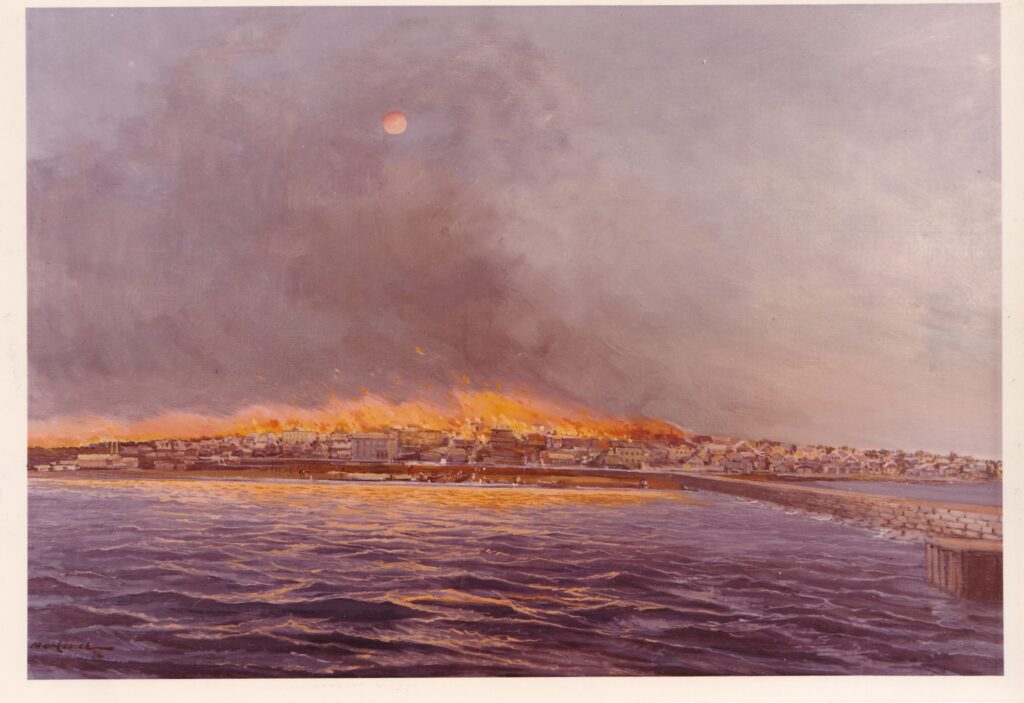
Perfect Conditions
From the 15th of September 1922 and into the early days of October, the residents of the Temiskaming region enjoyed unusually hot and dry weather. The oldest settler in the area declared that he had never experienced such conditions. Since authorities had lifted fire restrictions and everything was favorable for the setting out of fires to clear land, homesteaders took advantage of the situation. Meanwhile, to the south, in Coleman and Lorrian Townships, several small wildfires burned, accidentally set by campers, hunters, and prospectors.
Little did anyone know that by the end of the day, a towering wall of flame would take forty-four lives, obliterate over half a million acres of farm and woodland, and leave more than 6,000 people homeless.
Then, on October 4, 1922…
…the weather changed, and a cold front blew in. Stiff breezes fanned the flames and carried embers to adjoining fields and forests. Caught unaware, people were helpless to contain the onrush of the combined fires. The entire area over which the fire burned was a hotbed of hundreds of different fires.
In a few short hours, entire communities went up in smoke
In the northwest, the town of Charlton was wiped out, Englehart was partially destroyed, Heaslip, Tomstown, Thornloe, and other hamlets were obliterated. The heat warped railway tracks and caused buildings in open fields to explode into flame. Burning logs floated down the waterways, livestock died by the thousands: the very air seemed to burn.
The fire swept eastward toward the Quebec border, destroying Hilliardton, Whitewood Grove, Uno Park, and North Temiskaming, now Notre-Dame-Du-Nord, Quebec. To the west, Kenabeek and Osseo were razed and the fire burned to the shores of the Montreal river. Much to the relief of Elk Lake residents, the fire stopped just before it reached the town.
The inferno swept down on to New Liskeard striking the northwest side of the town. The railway station and grist mill caught fire as well as several homes, but a fortunate shift in wind direction spared the main part of the town.
Hit hardest
Haileybury bore the brunt of a separate fire from the west and the entire town of 5,000 was almost destroyed. Proud public buildings, fine churches, the armouries and courthouse, homes, and businesses were reduced to rubble.
From there, the fire moved south and levelled the smaller community of North Cobalt. Cobalt, a scant three kilometers further miles south was spared, when the winds shifted again.
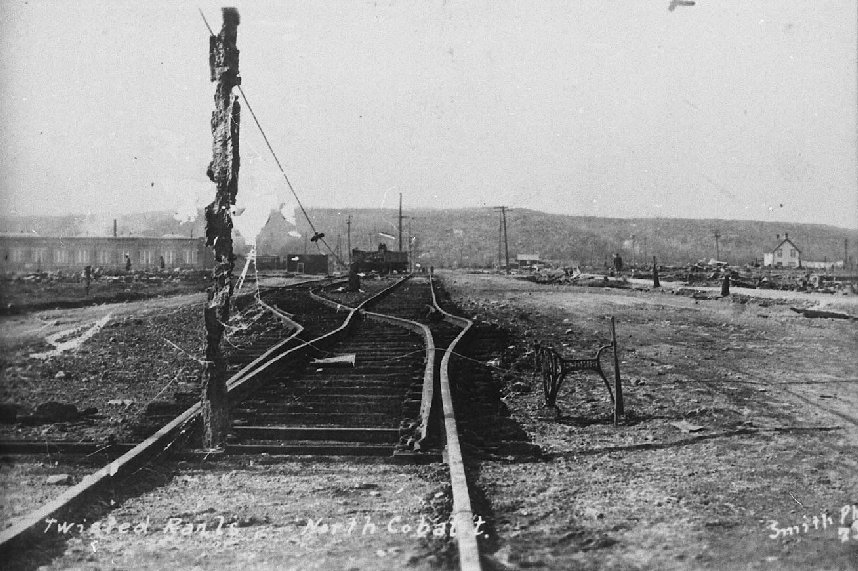
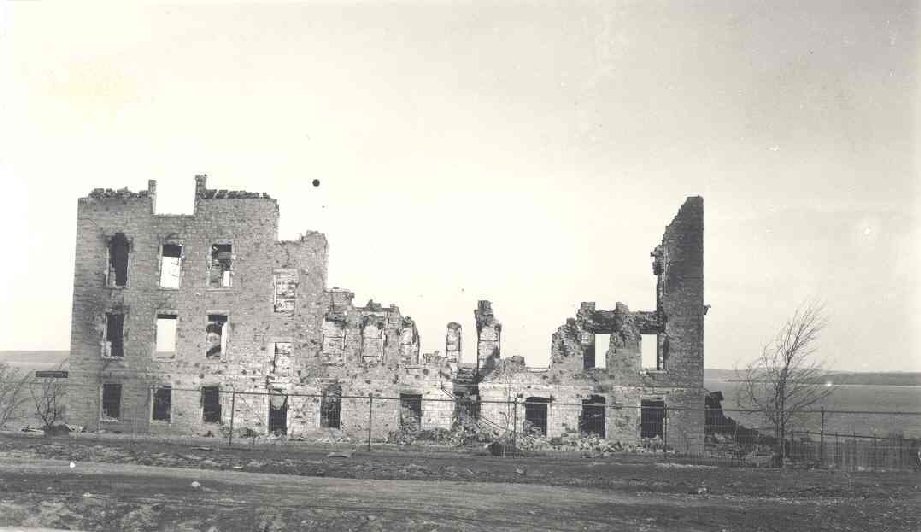



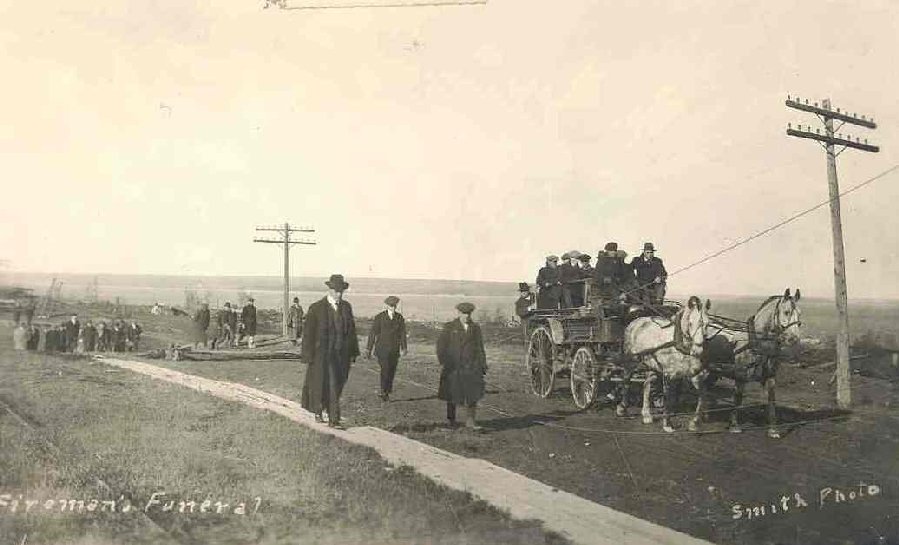



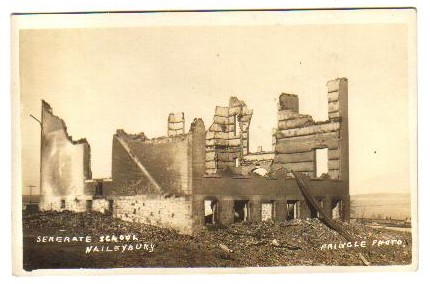







The next day
On the morning of October 5th, the sun rose on a smoking, blackened tract, which one day earlier had been bustling towns and the rich prosperous farms of the Little Claybelt. The wind blew cold and snow began to fall over the devastated area.
This terrible event ranks as the tenth worst natural disaster in Canadian history.
For a fuller account of The Great Fire of 1922
Since that day, the disaster has never been far from peoples’ mind. Publisher and editor Deborah Ranchuk wrote: Some have called October 4th, 1922 “The day that changed Temiskaming.” Many survivors, and indeed many people through the years have marked events as “before the Fire” or “after the Fire.”
The Great Fire of 1922, A Centennial Retrospective was published to commemorate the 100th anniversary of the tragic event. This is a comprehensive account of the event that follows the fire as it consumed 650 square miles, killed 43 people, and affected the lives of countless people in both Ontario and Quebec. The book records the survivors’ memories and showcases photos of that historic event. The book is illustrated with over 160 photos and diagrams.
Would you like to purchase a copy of The Great Fire of 1922, A Centennial Retrospective? The book is availalbe in hard cover $80.00 or soft cover $50.00. Shipping extra. Send us an email to place your order.

